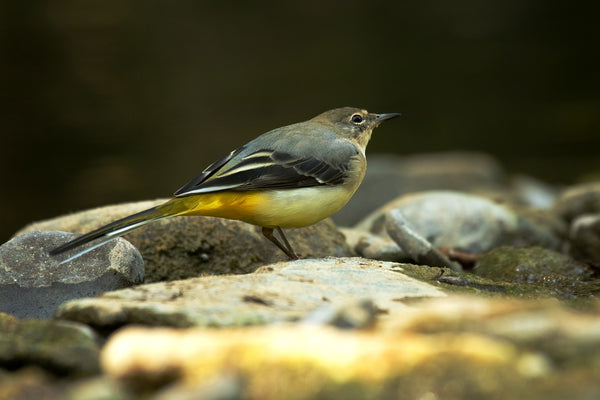
Grey Wagtail: Identification, Habitat, and Feeding Tips
Share
The Grey wagtail (Motacilla Cinerea) has slate grey upper parts and a strong yellow under-tail. In flight, its tail is longer than those of pied and yellow wagtails and it looks exceptionally narrow at the base.
They usually like to nest near waterfalls, lakes, canals or even shallow fast-flowing streams. Their nests are made out of twigs, grass and moss and are built in hollows or crevices. They are usually never too far from water and often turn up in cities and even our gardens especially if you have a pond or a running stream at the bottom of it.
Grey wagtails are resident all year in most parts of the UK and they are not a migrant in the normal sense as they simply move from one place to another but do so from an upland area (summer) to a lowland area (winter). This behaviour is known as “altitudinal migration”.
Grey wagtails are predominantly insect eaters which they tend to find ants and midges along the riversides; they will also take tadpoles and snails from shallow water.

They will also feed on mealworms and soft food mixes if offered from a bird table or ground feeder.
Mealworm Crumble is a soft bird food packed with essential proteins and is a no mess - no husks mix that is naturally nutritious. Mealworms are adored by all birds and when combined with our market-leading soft-food for wild birds, provide a nutritional alternative to traditional bird seed blends. If you're squeamish about handling live mealworms, this popular mix enables you to offer dried mealworms in your garden without having to touch them! Importability, dried mealworms provide extra calories and energy.
If you happen to get a glimpse of the Grey wagtail, listen out for its high pitched song which is a melodious trilling that is rarely heard, but a delightful sound to hear.
Written by Tina Jakes
